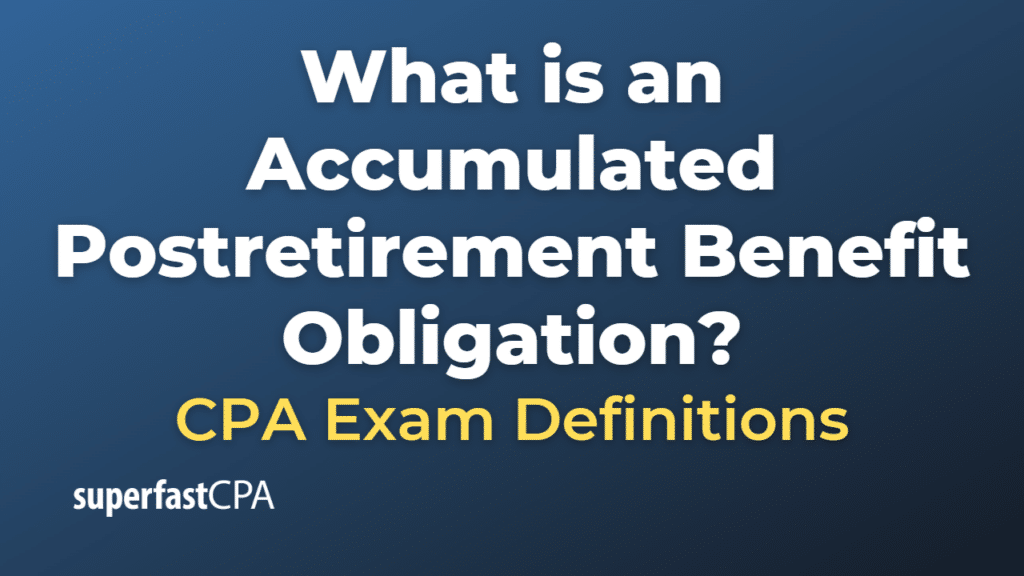Accumulated Postretirement Benefit Obligation
An Accumulated Postretirement Benefit Obligation (APBO) is an actuarial liability representing the estimated present value of future benefits that a company is expected to provide to its employees after their retirement, other than pension benefits. These benefits typically include healthcare, life insurance, and other welfare benefits provided to retirees and their beneficiaries.
The APBO is calculated by actuaries using various assumptions, such as employee demographics, healthcare cost trends, discount rates, and mortality rates. It reflects the projected cost of postretirement benefits earned by employees up to a specific point in time, considering their current and past service with the company. Companies must report their APBO on their financial statements in accordance with the accounting standards, such as the Generally Accepted Accounting Principles (GAAP) in the United States.
It is essential for companies to estimate and account for their APBO, as these postretirement benefits can represent a significant long-term financial obligation. By accurately estimating and reporting the APBO, companies can better plan for and manage their future financial commitments to retired employees.
Example of an Accumulated Postretirement Benefit Obligation
Suppose Company XYZ provides postretirement healthcare benefits to its employees. To estimate its Accumulated Postretirement Benefit Obligation (APBO), the company’s actuaries would consider various factors, including employee demographics, healthcare cost trends, discount rates, and mortality rates. Based on their analysis, the actuaries estimate the present value of future healthcare benefits for current and past employees.
For illustration purposes, let’s say the following information is available for Company XYZ:
- Current APBO: $4,000,000
- Service cost (benefits earned by employees during the current year): $500,000
- Interest cost (the increase in APBO due to the passage of time): $300,000
- Actuarial gain (reduction in the APBO due to changes in assumptions or experience): $200,000
- Benefits paid during the year: $350,000
To calculate the APBO at the end of the year, Company XYZ would follow these steps:
- Start with the current APBO: $4,000,000
- Add the service cost: $4,000,000 + $500,000 = $4,500,000
- Add the interest cost: $4,500,000 + $300,000 = $4,800,000
- Subtract the actuarial gain: $4,800,000 – $200,000 = $4,600,000
- Subtract the benefits paid: $4,600,000 – $350,000 = $4,250,000
Thus, the APBO at the end of the year would be $4,250,000. This amount would be reported on the company’s balance sheet as a long-term liability, reflecting the estimated present value of future postretirement healthcare benefits the company is expected to provide to its employees.













